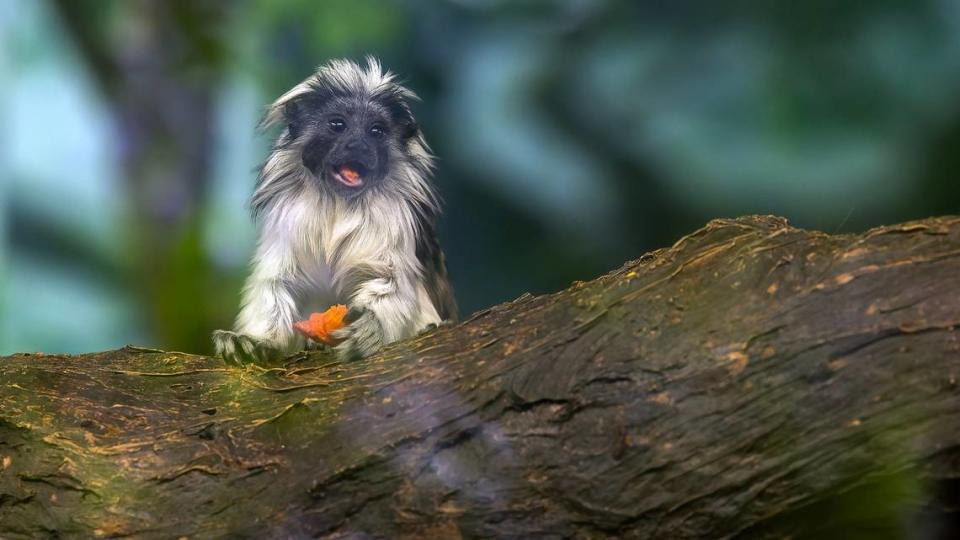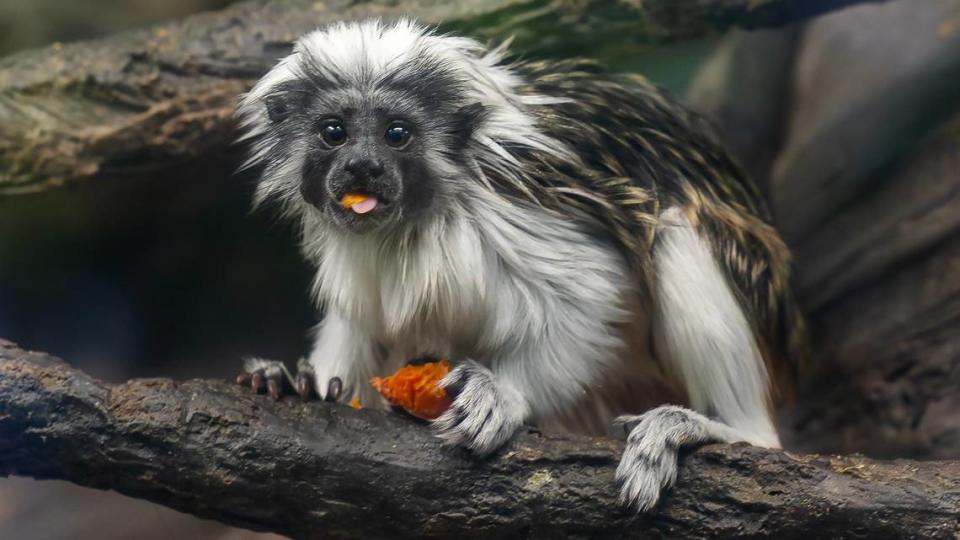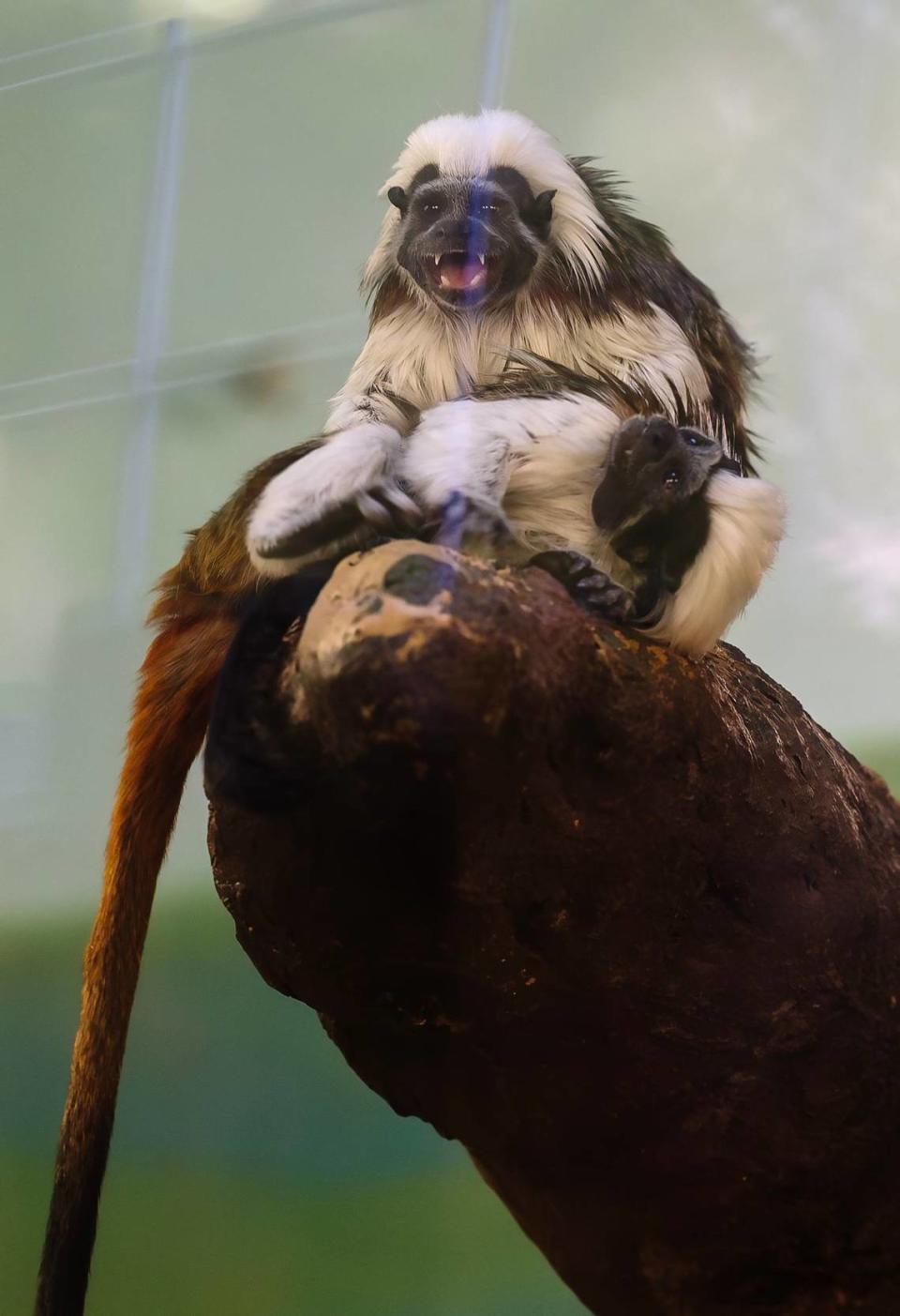Perfect match? See this new baby monkey at Zoo Boise, born for genetic diversity
Visitors at Zoo Boise may spot a new addition to its animal family — a miniature white-maned monkey, clinging to the back of a parent or one of its older siblings.
The zoo welcomed a cotton-top tamarin baby in April as part of its participation in the Species Survival Plan, which aims to ensure the survival of species through managed breeding, said Harry Peachey, the general curator for Zoo Boise.
Cotton-top tamarins, named for their characteristic tufts of white facial fur, are native to northwest Colombia. But because of deforestation and illegal pet trade, they’re considered critically endangered, with fewer than 6,000 left in the wild, Peachey told the Idaho Statesman. And their populations continue to decrease.

Zoo Boise has implemented the Species Survival Plan — a program run by the Association of Zoos and Aquariums, a nonprofit that accredits U.S. zoos —to help maintain genetically diverse captive populations.
The zoo’s involvement in the survival plan entails making a studbook, with important information about each animal that helps zoos find the right breeding partners for them. Specifically, zoos look at mean kinship, which is the average amount of genetic material an individual animal has in common with all others in a population. Zoos then prioritize healthy animals that have less in common with the rest of the population, Peachey said.
Parents of the baby cotton-top tamarin, Eddie and Mimi, were matched as part of the Species Survival Plan, Peachey told the Statesman. The new addition to their family is one of four children they’ve had as an effort to diversify populations.
“We want the act of visiting the zoo to be a conservation action,” Jeff Agosta, a spokesperson for Zoo Boise, told the Statesman.
Peachey said reintroducing animals that were born under human care, like in a zoo, to their wild habitat is the ultimate goal. But for now, it’s important to maintain healthy captive populations.

“Genetic diversity is the foundation that animals use to adapt to change. And if these animals were ever reintroduced to the wild, they’re going to face tremendous challenges,” Peachey said. The conservation strategy is a change from past practices, he added, when zoos prioritized producing as many animals as possible over genetic diversity for endangered species, including the cotton-top tamarin.

The primate is one of the smallest in the world, with adults weighing 1 pound and babies weighing only 1 ½ ounces. Despite their small size, they serve critical functions in the Colombian forest, like dispersing seeds, pollinating plants and keeping other species populations in check, according to the New England Primate Conservancy, a wildlife conservation organization. For the cotton-top tamarin, captive numbers have been increasing due to the Species Survival Plan, Peachey said.
But he also noted the importance of inspiring zoo-goers to care about the animals they’ve seen. A study published in Conservation Biology showed that after people have been to a zoo, they care more about conservation efforts.
“How can you not watch them and be concerned about what’s going to happen to this species in the future?” Peachey said.

